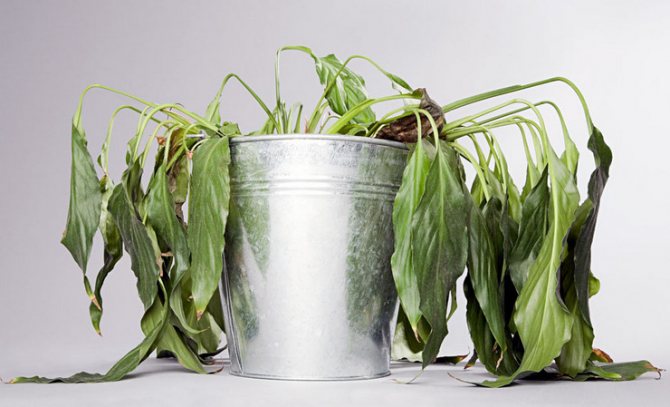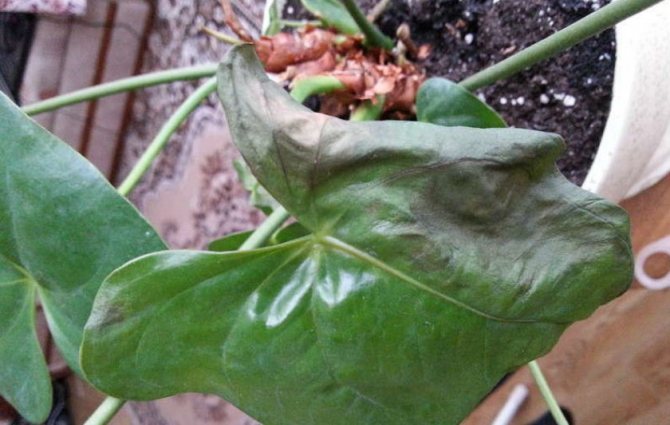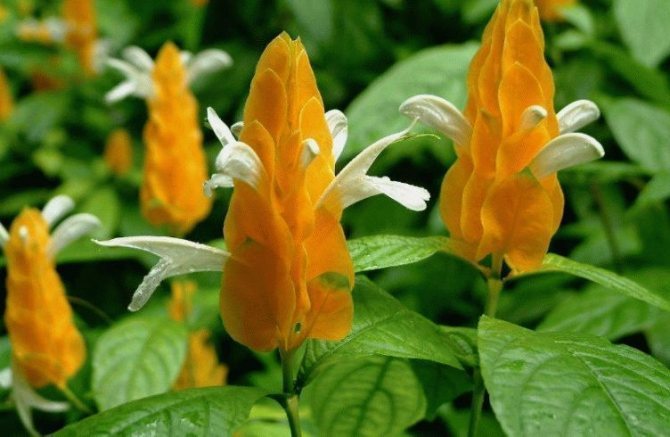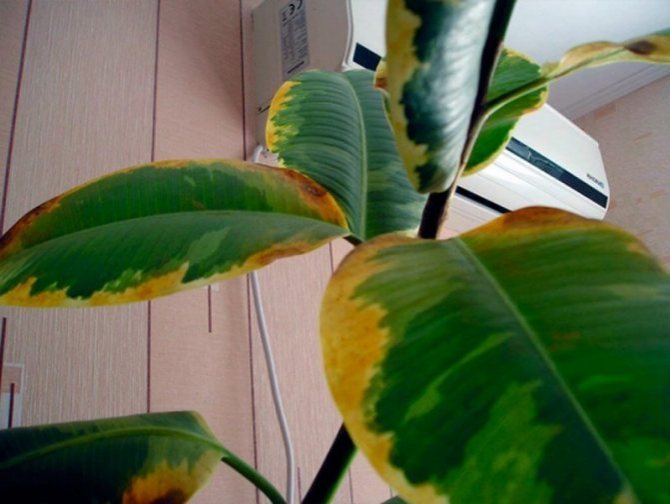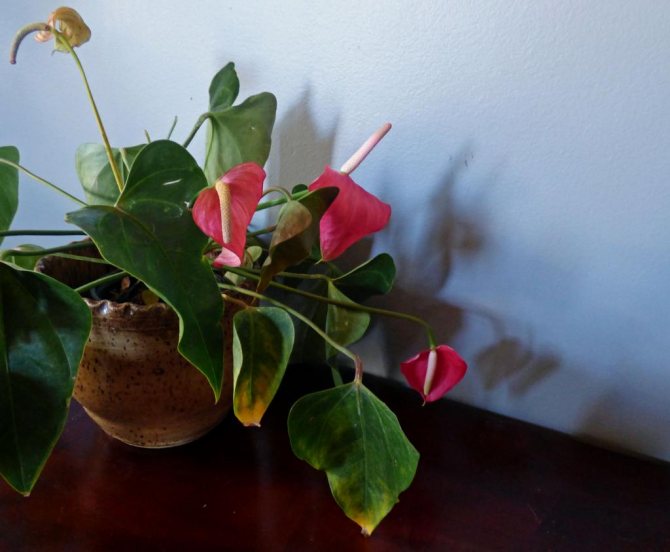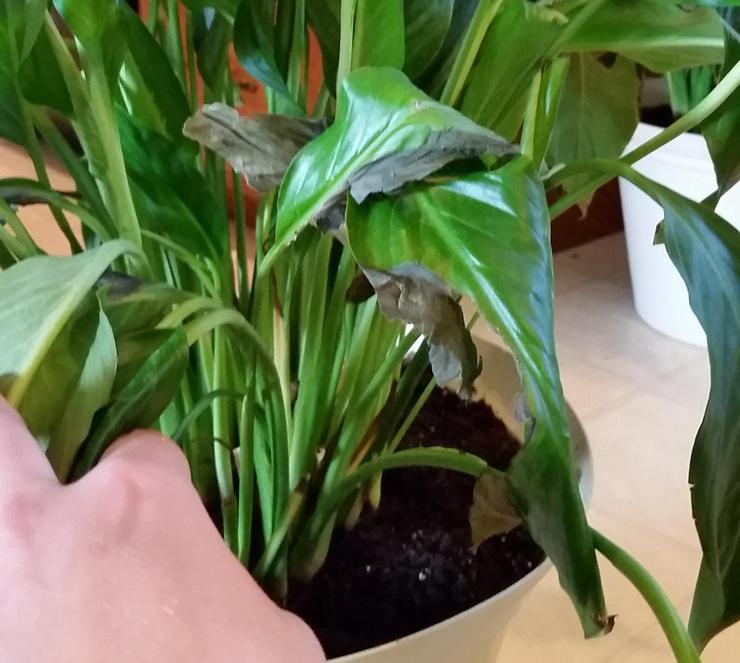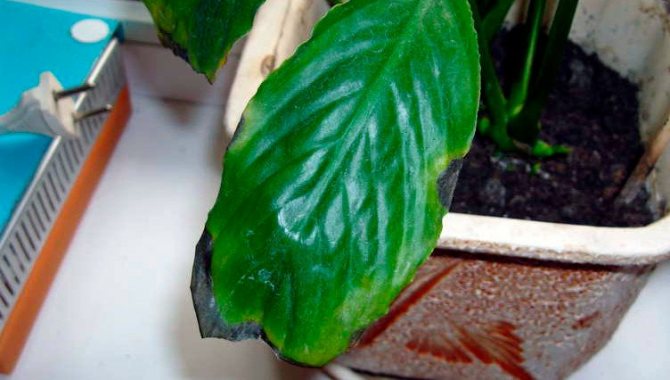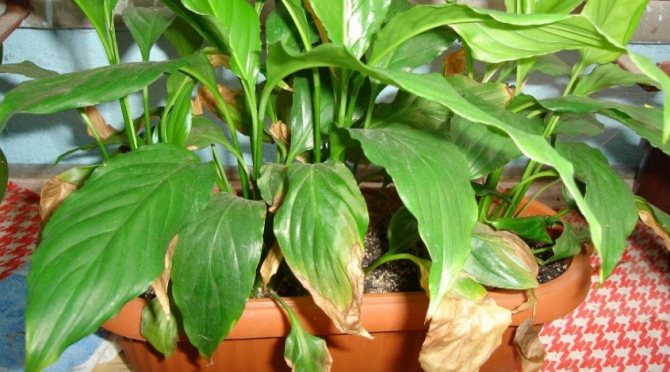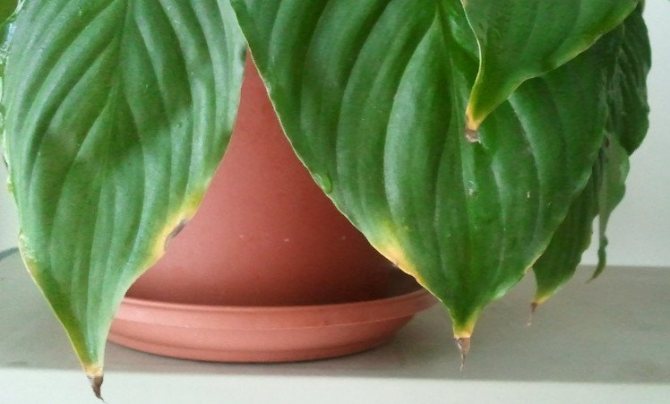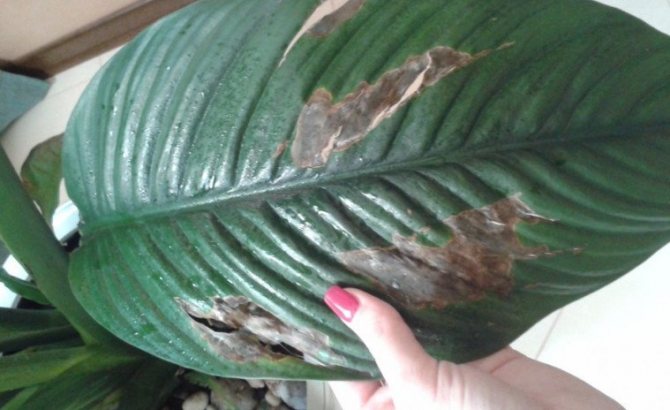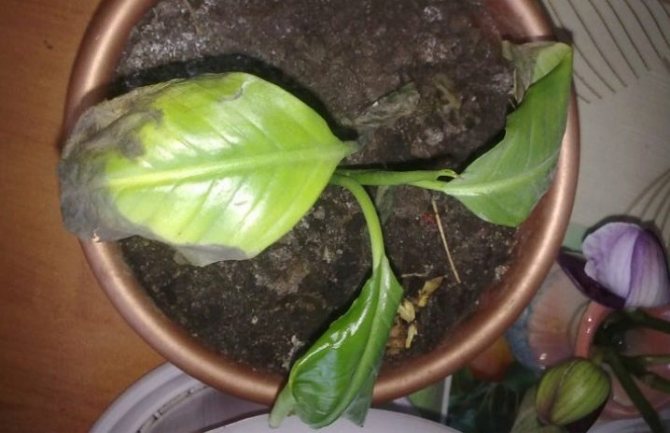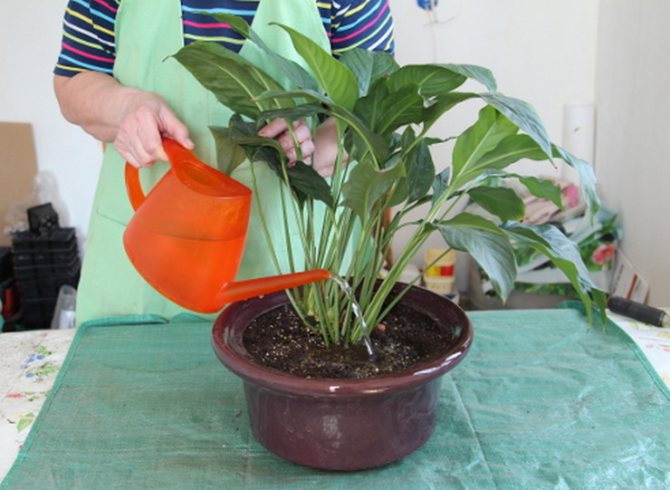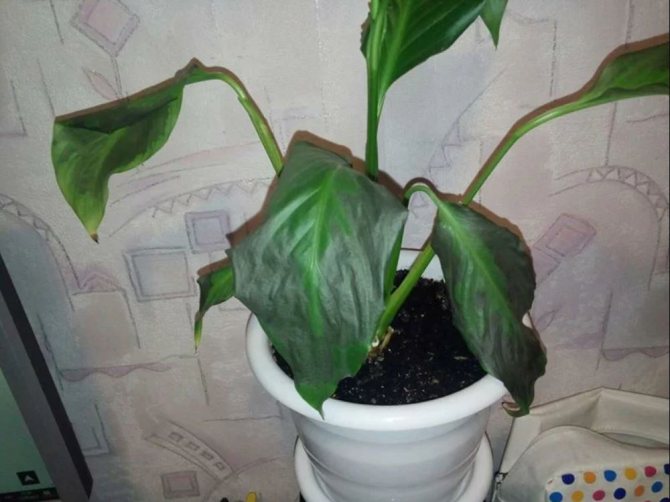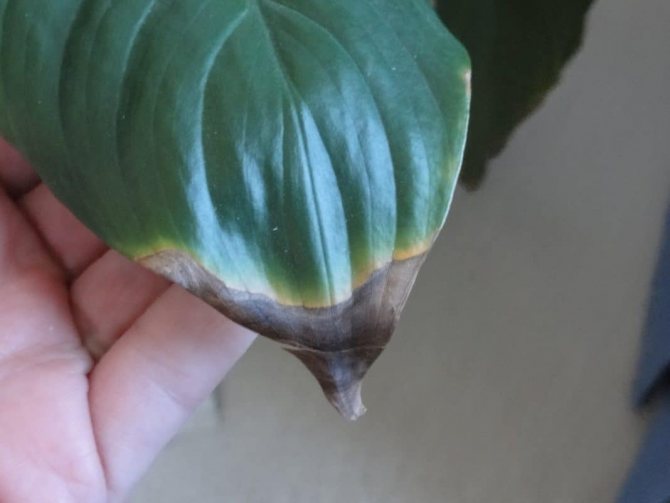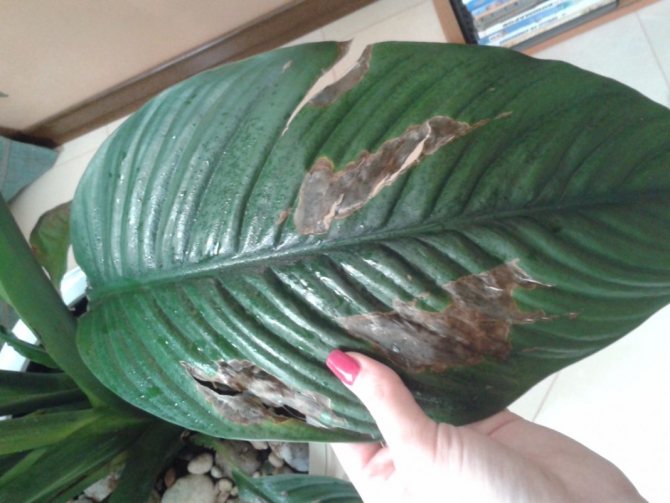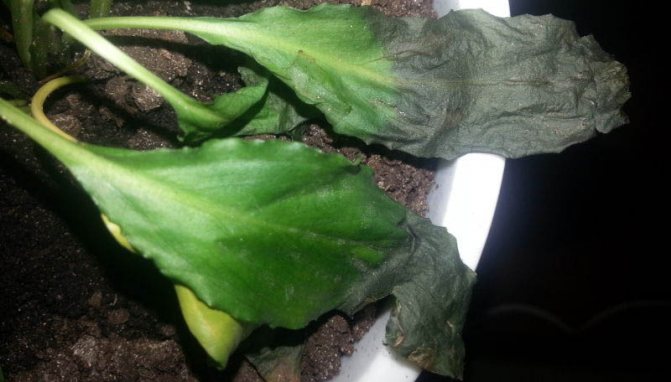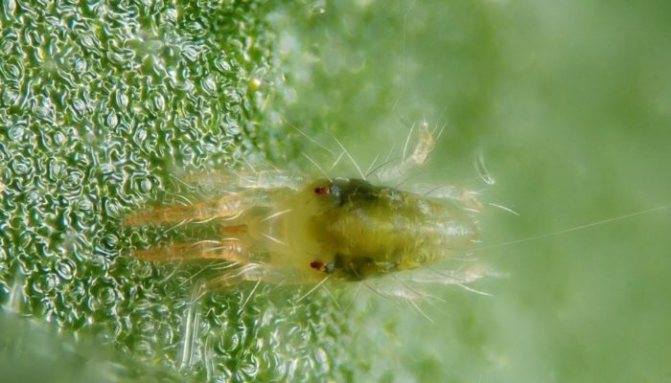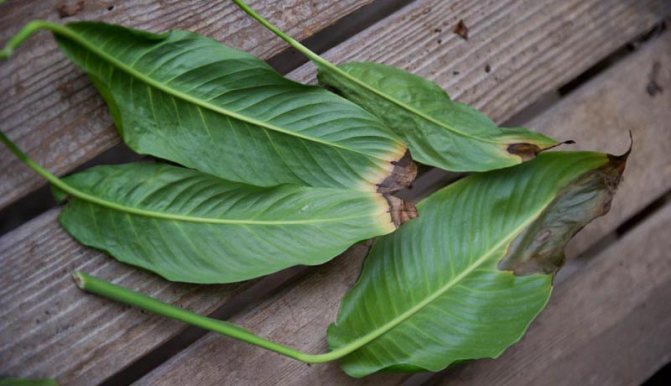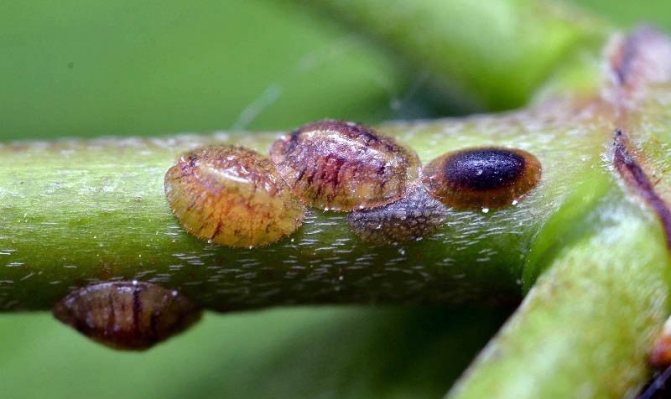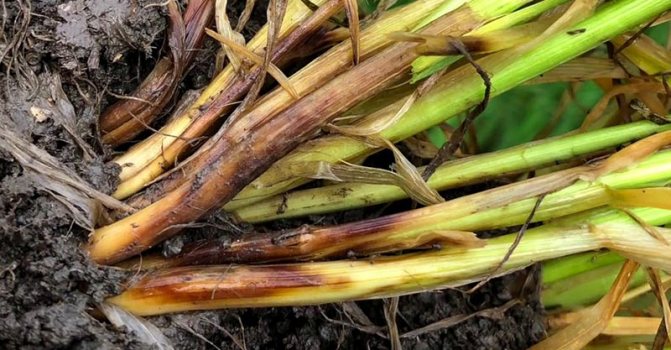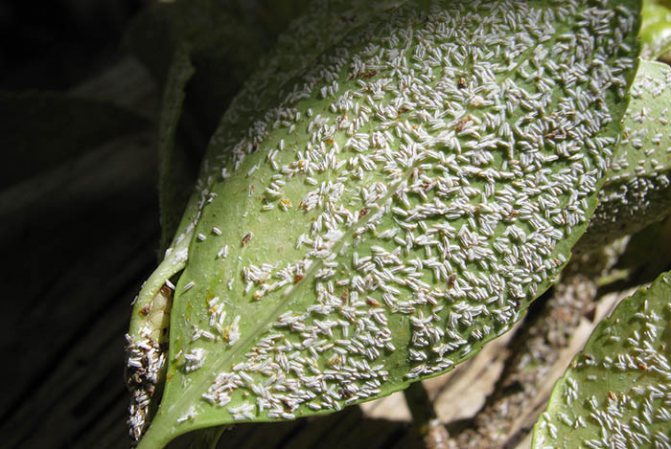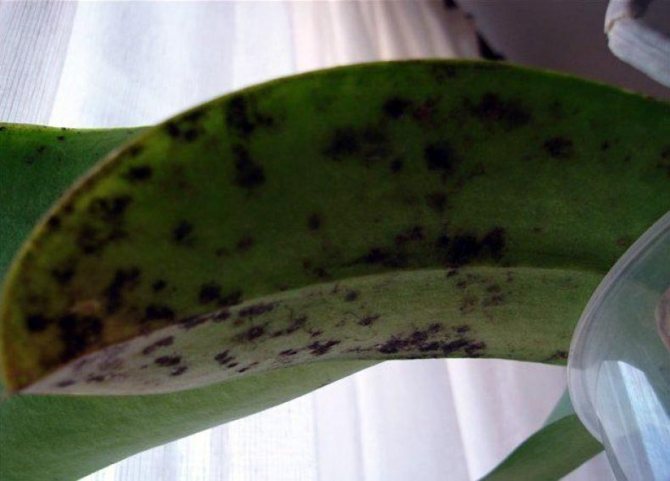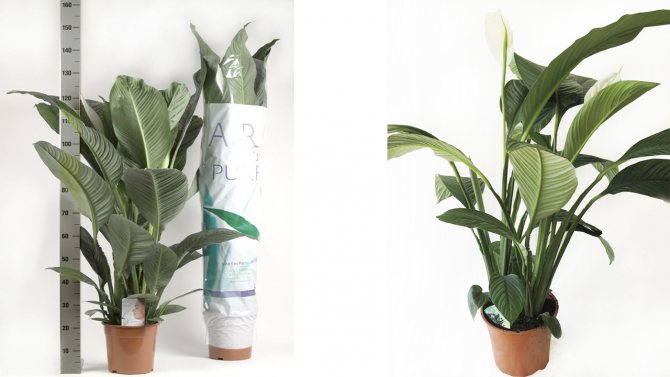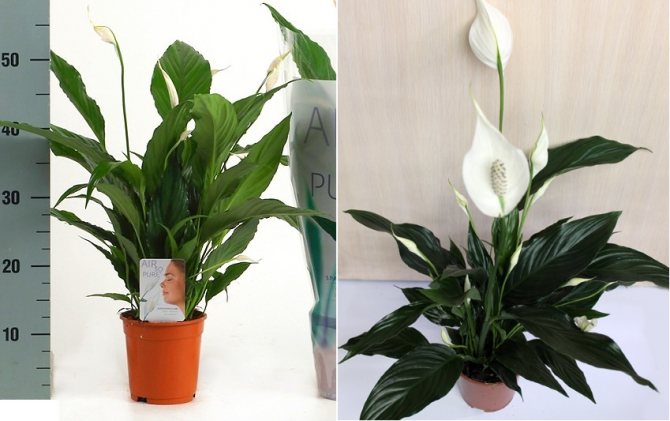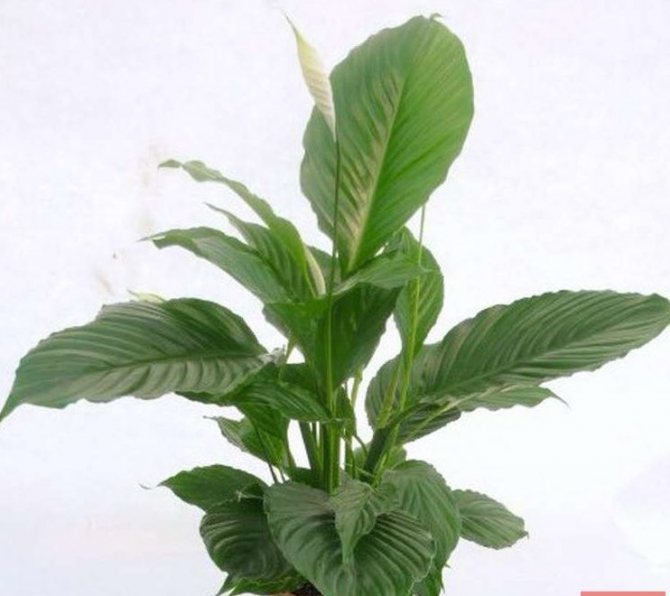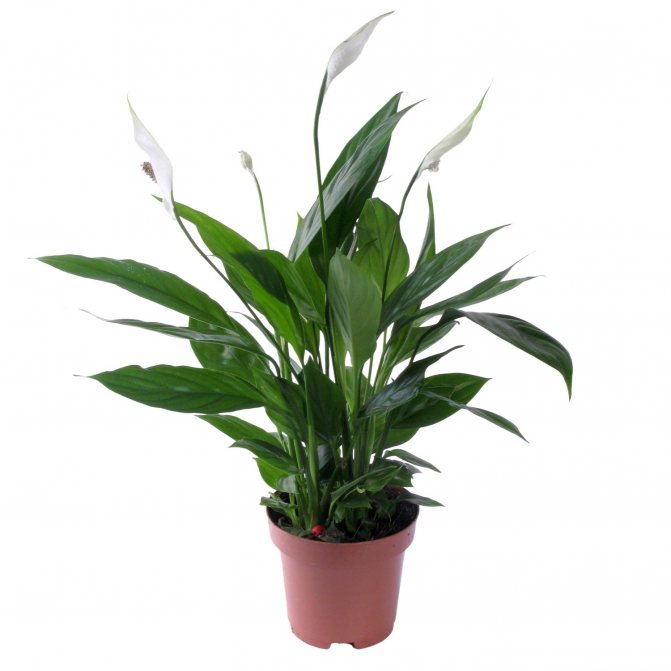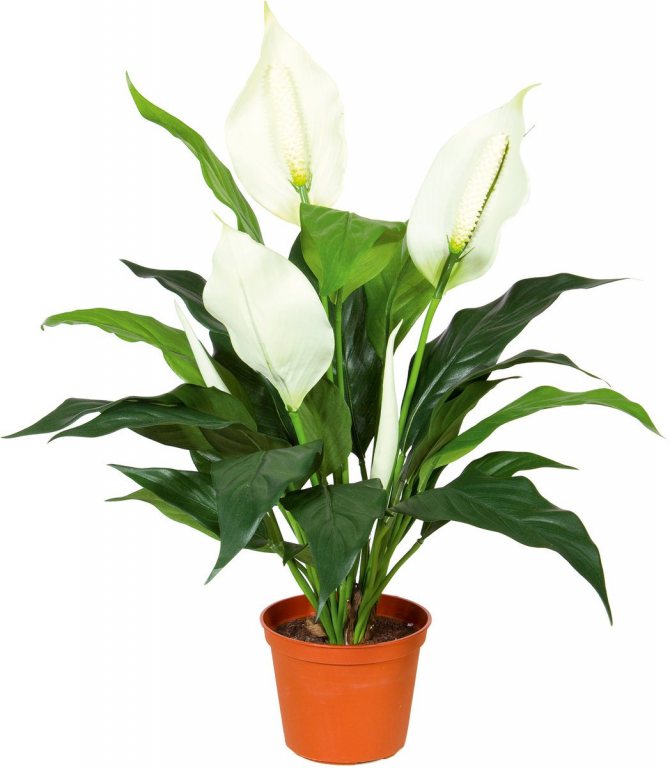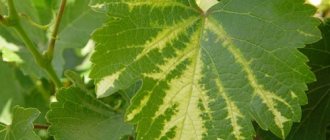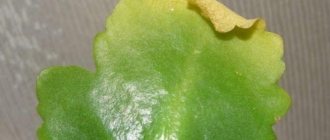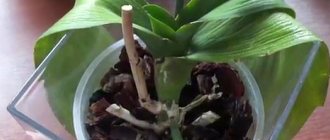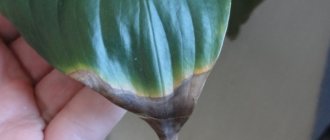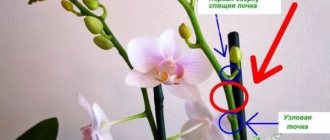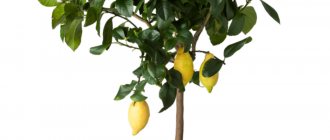"Spathiphyllum leaves turn black and dry, what should I do?" A question often asked by flower growers who do not follow the rules of plant care. Most often, the leaves dry and turn black due to inappropriate conditions for the flower in the place of its keeping. The article discusses what are the causes of blackening and how to help the plant recover.
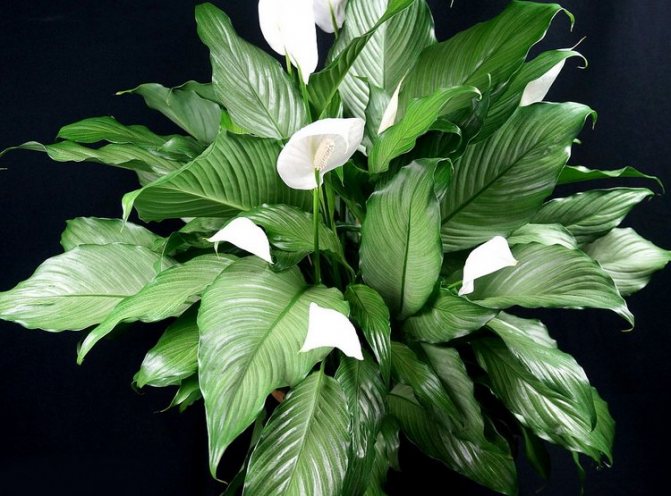
Causes of blackening of the leaves of spathiphyllum
Spathiphyllum, like other representatives of the Aroid family, flower growers are attracted by the decorative features of the foliage. It also has a beneficial effect on the energy in the house, blooms for a long time, and is resistant to diseases. But it happens that this disease-resistant flower is influenced by negative factors. And the consequences are reflected in the appearance of the inflorescences, because they are more sensitive than the leaves.
There are several reasons for this phenomenon:
Spathiphyllum is a plant from the tropics, therefore it is recommended to water it regularly. However, following this rule, many growers get carried away and over-water it. Such a bay leads to root decay.
The root system can also rot when the flower is kept in a cool room. A growing temperature of about 22-24 degrees is desirable.
Spraying recommended for dry air in winter can also lead to excess moisture, since spathiphyllum actively absorbs moisture through the leaves. If you use cold water, then blackening is guaranteed.
This flower is afraid of drafts.
Some growers rely on the nutritional value of the soil and do not consider it necessary to feed the pet. The lack of trace elements also leads to blackening of the crown. But do not get carried away with fertilizing, their excess can also harm the plant.
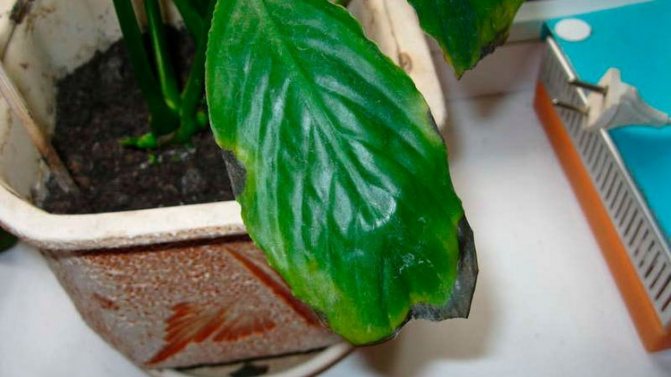

Methods for dealing with blackening during overflow and dry air
Growers notice blackening of the leaves almost immediately. Initially damaged leaves should be carefully removed from the bush. The next action must be aimed at eliminating the factors of the appearance of the disease.
If the reason lies in dry air, then a simple spraying from a spray bottle will help. The procedure is recommended to be carried out in the morning and always with settled water at room temperature. In the evening, you should not resort to such activities. The water may not have time to absorb, and the coolness of the night will provoke hypothermia of the leaves and even their possible rotting.
If a significant amount of dust has accumulated on the leaves, you need to either wipe the greens with a damp sponge or a soft, absorbent cloth, and it is also recommended to take a shower periodically.
To do this, the pot should be wrapped in polyethylene, so that the film neatly adheres to the stem, while covering the entire territory of the soil. The stream of water needs to be adjusted so that it is moderate and does not provoke damage to young shoots.
In addition, you need to revise the degree of watering. If an overflow has occurred and a musty smell emanates from the pet, you need to change the ground in the flowerpot as soon as possible.
A number of activities are recommended:
- Dig up the bush
- Free the root from the soil
- Examine the root system for decay or damage
- Trim all diseased roots
- Slices must be sprinkled with ash or charcoal to avoid the spread of infection
- Purchase or independently prepare a substrate for planting a resuscitated pet
Read also How best to eat avocado
It is important to prepare the pot for the transplant. It must be thoroughly washed with soda and spilled with boiling water so that there are no pathogenic bacteria on its walls. It is imperative to place drainage at the bottom. After planting according to all the rules.
What to do so that the leaves of spathiphyllum do not turn black
Fighting blackening of the leaves of the plant is quite simple if the cause of this problem is established. Here are some helpful tips to help keep Spathiphyllum healthy and healthy.
With excessive soil moisture, it is necessary to limit watering. If this does not help, and the leaves continue to turn black, root decay may have already begun. In this case, the plant should be transplanted into a new soil with a revision of the root system.
When transplanting, the plant is removed from the pot and the old soil is removed from the roots. Then the roots are examined, all diseased and rotten areas are removed. After that, the spathiphyllum is transplanted into a new soil. It should not be too heavy so that water does not accumulate in it. Care must also be taken to provide good drainage to drain excess water.
If the leaves turn black due to lack of moisture, it is necessary to adjust the watering regime and regularly spray the plant to increase the humidity. It is also helpful to place the spathiphyllum pot in a tray with moistened sand or pebbles to maintain stable moisture near the flower.
Top dressing is required when caring for spathiphyllum. But it must be remembered that this plant reacts very sharply to both a lack of fertilizers and an excess of them. Therefore, you need to feed it very carefully, it is better to underfeed than overfeed.
In order for spathiphyllum to always have beautiful green leaves, it needs a stable temperature regime. It is also necessary to remove it from radiators and air conditioners. Install the flower pot in a place with minimal air movement.
It is advisable to immediately transplant a newly purchased plant from a shipping pot into a permanent one and provide it with proper care. But if spathiphyllum blooms, it is better to wait until the end of flowering and only after that start transplanting.
How to treat a pear
Consider how to prevent pear disease, how to treat when signs of disease appear and how to process the pear so that the leaves do not turn black.
Fighting infection
Getting rid of pests
The reason that the leaves of a pear seedling turn brown is often insect pests. The fight against them must be started as quickly as possible. When, due to parasites, the leaves on the pear turn black, what to do in each case, the gardener must decide depending on the type of pest.
Aphids attack trees all season, appearing after rains. With a large accumulation of insects, the pear is treated with chemicals. With a small amount of pests, you can do with folk remedies: an infusion of ash, tomato tops, garlic, a solution of ammonia, etc. You can fight the pear sap with the help of a soap-kerosene solution. To prepare it, you need to dissolve half a piece of laundry soap in warm water and add 100 ml of kerosene, add water to a volume of 10 liters and spray the tree.
This procedure is carried out in the spring, until the buds have blossomed. The second time is sprayed with karbofos (0.2% solution) before flowering. The same treatment is required in September so that insects do not stay on the pear for the winter. Gall mites are removed with acaricides, which are applied to the tree every two weeks. If the lesions are minor, an infusion of dandelions, marigolds or potato tops will help.
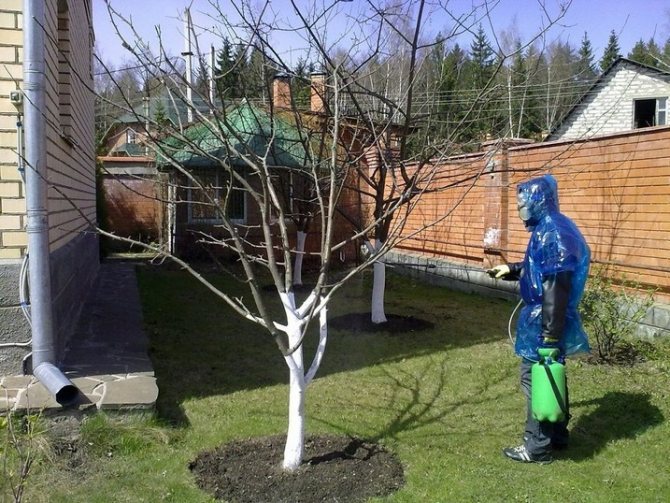

Spathiphyllum leaves dry around the edges what to do
Dark black or brown spots on spathiphyllum usually indicate a significant bay that accompanies the plant for a long time. Most likely, the flower is watered too often and there is a constant swamp at the bottom of the pot, near the roots. It is not surprising that the roots in such a situation begin to rot, which leads to the fact that the leaves of the spathiphyllum turn black.
What to do?
First, adjust the watering (read about the recommended watering mode in the previous paragraph). If the spots continue to spread to more leaves or grow in size, the roots should be examined and, if necessary, the rot found should be treated. This can be done according to the following scheme:
Remove the spathiphyllum from the pot.
Rinse the roots in water (in a bucket of water), gently freeing them from old soil.
Examine the roots for rot. Rotten roots - yellowish or brown, soft; healthy roots are white, dense.
Cut all rotten roots with a clean knife to healthy tissue. Slices - dust with crushed activated charcoal or cinnamon.
Leave the plant to dry for 2-3 hours.
Plant the spathiphyllum in a new, light soil with the addition of activated carbon (to prevent rotting of the slices). No need to water right away! The parquet ground is initially damp, this is enough to support the life of the "amputated" roots.
After 2-3 days, when the new soil dries out, pour the transplanted spathiphyllum with warm, settled (ideally, boiled) water with the addition of Kornevin.
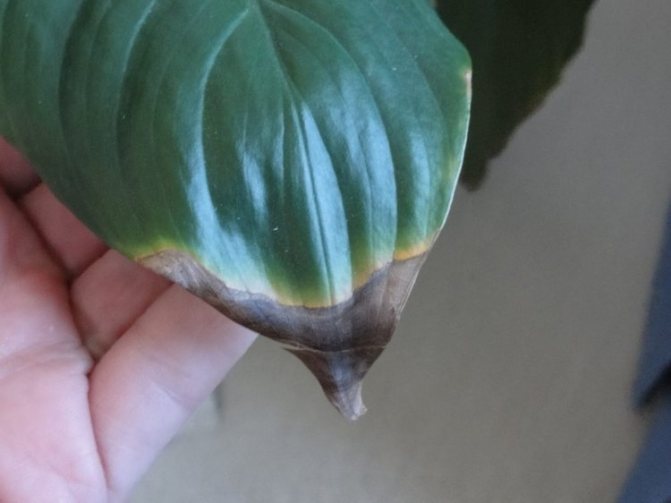

Why is this happening
The most common reason why spathiphyllum leaves turn black is a lack of proper care. In most cases, blackness indicates root damage. If the tips of the leaves are blackened in spathiphyllum, most likely the flower is being watered incorrectly, and the problem may also be in the wrong substrate.
Excess moisture
Women's happiness needs regular watering. It is desirable that the soil is kept moist, but at the same time, moisture stagnation should be avoided. When the root system is constantly in wet soil, it begins to rot. This is evidenced by the blackening of most of the leaf. Black edging appears on the inflorescence.
In the summer, the spathiphyllum flower should be watered abundantly once every 3-4 days. In winter, the plant prefers moderate watering, once a week is enough. The flower is watered when the top layer of the substrate dries up.
Fungal diseases
In spathiphyllum, the leaves turn black in case of infection with fungal infections, which primarily affect the root system. Their development is facilitated by moist soil and low air temperatures. Weeping, loose blackness appears on the infected parts of the plant, sometimes together with the manifestation of brown spots or specks.
Hypothermia
Another reason that the tips of the leaves of Feminine happiness dry out may be that the flower is freezing. Spathiphyllum is a thermophilic plant. It does not tolerate drafts and sudden temperature changes, as can be seen from sagging foliage and darkening of inflorescences. With light freezing, the flower will recover, only black tips will remain. If the plant is frozen when it was wet, it may die.
The roots can freeze if spathiphyllum is watered with cold water in winter. In this case, decay of the root system will begin, blackening of the foliage and dried tips of the leaves will begin to appear. Therefore, the water used for irrigation must be at room temperature.
You also need to monitor the air temperature in the room with the flower. In the summer season, it should correspond to + 20-29 degrees. In winter - not less than +15.
Low air humidity
Since Women's happiness is a tropical plant, it needs high humidity. Large leaves are involved in the process of gas exchange, as a result of which a lot of moisture evaporates, which must be compensated. Therefore, the plant needs to ensure not only proper watering, but also spraying with soft, well-settled water at room temperature. This is especially true in the winter season, when the air becomes drier due to the operation of heating devices. Due to the lack of moisture, the tips of the foliage begin to blacken and dry out, while the leaf itself remains green.
The procedure for spraying and washing Women's Happiness should be carried out throughout the year. In the summer season, it helps to clean the plant of dust and saturate it with moisture, in winter it maintains the humidity of the air at the required level. In addition, it is also pest prevention.
Illiterate use of mineral fertilizers
Often the result of the leaves of spathiphyllum turning black may be an excess of fertilizer. Their shortage also adversely affects the flower. When overfeeding, the root system is not able to cope with the excess amount of nutrients, which often leads to rotting, which causes blackening of the upper parts of the plant.
In the case of overfeeding, you will need to transplant into a new substrate, while cutting off rotten and damaged roots, and other parts of the spathiphyllum. The transplanted plant is fed as usual.
Fertilizers are applied twice a month by foliar method. Female happiness reacts well to organic matter, therefore it is recommended to alternate it with mineral fertilizers. It is important to use the drugs according to the instructions and in no case increase the dosage. In the winter season, spathiphyllum is at rest, so you should stop feeding it.
You do not need to fertilize the flower immediately after purchase, as usually in flower shops the plant is planted in soil saturated with nutrients.
In spathiphyllum, leaves disappear in the middle what to do
The appearance of dark brown-brown or black spots in the middle of the leaf blade may be the result of root decay. The reason lies in the improperly organized irrigation regime. If the substrate is normal, you may have exposed the crown of the spathiphyllum to direct sunlight. Burns appear in a similar way, and then the leaves begin to turn yellow and die off.
The flower grows in the forest, under the shade of trees, so it loves diffused light, try to protect it from the scorching rays on the southern windowsill with tulle. Women's happiness will feel more comfortable on the east or west window.
Black spots in the middle of the leaves sometimes indicate hypothermia of the root system. Remember that an exotic guest cannot stand a draft and likes to keep his feet warm. If there is a draft on the windowsill, place a foam circle under the pot. The normal temperature for an exotic guest is 23-25⁰C, in winter not lower than 15⁰C. Nighttime temperature fluctuations will lead to cooling of the moist substrate, which will freeze the delicate roots.
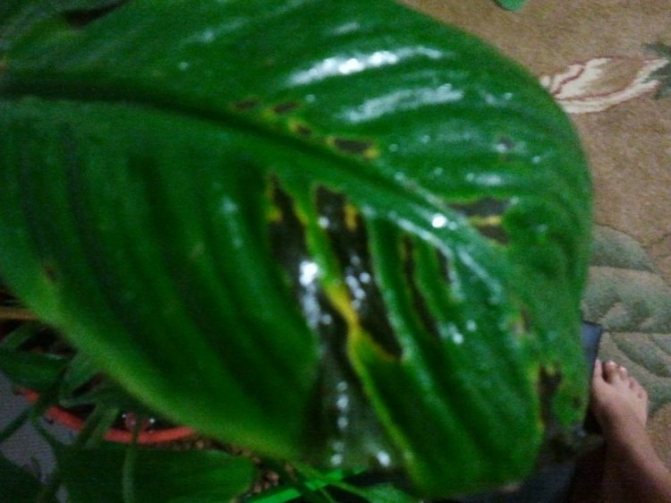

Attention! Never water the flag leaf overnight.
Only with proper care and attentive attitude, even such an unassuming flower as spathiphyllum will regularly delight with flowering and not cause trouble to the owner.
Prevention of blackening
Having familiarized yourself with the reasons why the tips of the leaves in spathiphyllum and foliage in general turn black, you can avoid this problem by providing the plant with proper care and good care. So that Women's happiness does not hurt, you need to adhere to the following rules:
- maintain the required temperature regime;
- do not forget that the humidity in the room with the flower should be increased;
- once every 7 days, wipe the leaves with soapy water and rinse the spathiphyllum under a warm shower;
- remove the white plaque that appears on the surface of the substrate;
- transplant the plant once every 2-3 years;
- water and spray only with soft settled or distilled water at room temperature;
- prevent waterlogging or drying out of the soil;
- apply top dressing correctly;
- protect the flower from drafts and direct sunlight.
Knowing what spathiphyllum needs and adhering to certain rules of care, you can provide it with the proper conditions for good growth and development, for which it will thank you with a healthy look and beautiful flowers.
We offer a video about the causes of the disease of spathiphyllum:
Reproduction of spathiphyllum
The flower is bred by dividing the bush in the spring. Lateral processes with roots are separated from the mother bush, carefully so as not to disturb. Then the parts are planted in separate containers with soil, as for an adult plant. Baby care is followed as described above.
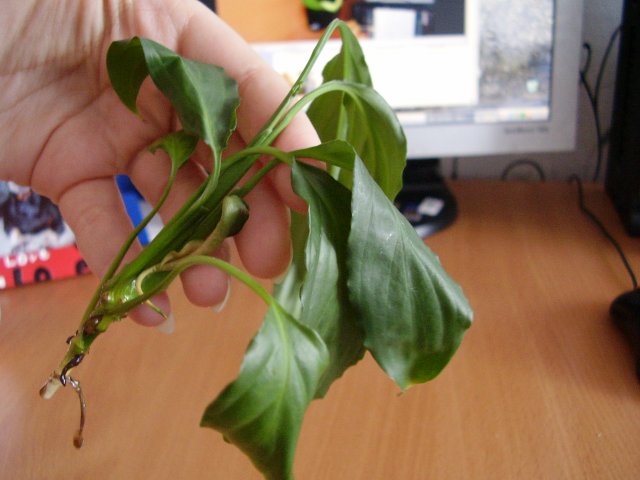

Some gardeners try to propagate spathiphyllum by seed. The planting material is collected and, after collection, is sent to the ground from peat and sand, covered with cellophane (glass). In the "greenhouse" the soil should be moist, but not wet. Seedlings need to be constantly ventilated. Note that their germination is so minimal that it is better to give preference to the vegetative method of breeding female happiness.
Prevention and treatment of diseases
When the spathiphyllum flower darkens, turns black not only on the leaves, but also on the flags, an urgent need to start rescue actions.
In case of root decay, a transplant is needed:
- Remove the diseased plant from the pot.
- Place the roots in water, where to remove the earthen lump.
- Examine the root system, cutting off diseased parts.
- The root lobe is kept for some time in solutions of a fungicide or weak potassium permanganate.
- The sections are processed with crushed coal.
- The roots are left to dry for 2 hours.
- Drainage is laid in a new pot on the bottom, a small part of fresh soil is poured.
- Spathiphyllum is placed in a pot, the resulting voids are covered with soil.
- If the soil is not moist enough, a little watering will be required.
- With subsequent irrigation, the drug Kornevin is added to the warm, settled water for irrigation.
- The flower needs daily spraying.
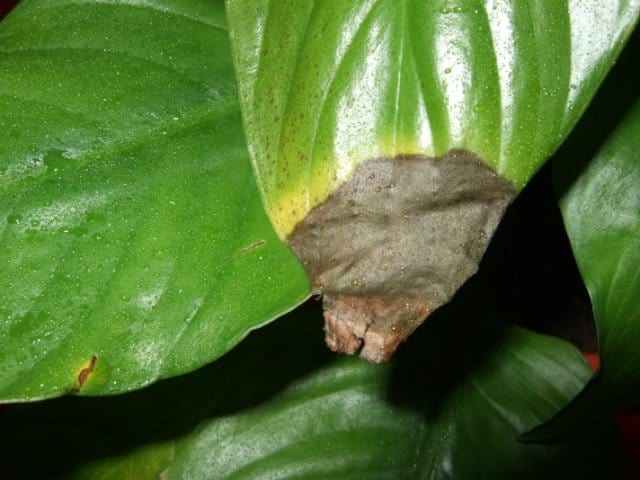

So that the flower of Women's Happiness does not begin to turn black at all, it is necessary to carry out preventive procedures that protect against diseases.
Prevention is the right, consistent care:
- shade from direct exposure to the rays of the sun;
- adhere to the irrigation regime, high air humidity;
- keep warm with a temperature of 23 to 25 0 С, temperatures below 15 0 С are not allowed;
- protect from drafts;
- transplant into a larger pot with new soil every year;
- apply top dressing according to the instructions;
- remove faded peduncles, leaves.
Wet wiping is also part of prevention and hydration.
As a rule, subject to the cultivation technology and providing the plant with full-fledged care, diseases and pests of spathiphyllum practically do not affect. However, you should pay special attention to the indoor flower in the following cases:
- a fairly common pest of Spathiphyllum is a mealybug, for the destruction of which it is necessary to wipe the leaves with a weak alcohol solution, and then spray with an infusion based on citrus peels or "Aktellik";
- defeat by a sooty fungus is accompanied by blackening of the leaves of the spathiphyllum, and treatment of the affected surfaces with a standard soap solution is used for treatment;
- significant harm to the flower can be caused by the shield moth, which provokes the appearance of dark spots on the indoor plant, and to combat which a soap-tobacco solution or treatment of the aerial part with nicotine sulfate is used, at the rate of 1 g of the drug per 1 liter of warm water.
Where better to put
In a room where there is little light throughout the day, the flower will be quite comfortable on the windowsill. Otherwise, it is better to put it away - on a cabinet, shelf or in a corner. Large specimens with large leaves look great on the floor.
This plant rarely suffers from a lack of light. Therefore, if there is a distant corner in the room, in which a flower pot will fit well, it may just be spathiphyllum. His leaves turn black, as a rule, not because of problems with lighting, but from improper watering and a lack of minerals. From an overabundance of light, the spathiphyllum stops growing. Existing leaves do not increase in size, and new ones do not appear.
Frequent root and leaf diseases
Flowers spathiphyllum and anthurium - male and female happiness together
The actions of flower growers aimed at treating spathiphyllum depend on the disease that struck him.
Note! Sometimes the flower cannot be saved, so you need to be careful and take preventive measures in a timely manner.
Root rot
The description of the disease lies in its name. The roots of the plant can rot due to the action of fungi. The disease develops under the influence of the following factors:
- excessive watering;
- low acidity of the soil;
- too dense soil.
With root rot, it is necessary to remove the affected areas in order to save the plant. After that, it needs to be transplanted.
Note! Diseased roots have a red tint. If the action of the mushrooms spreads to the leaves, they lose their brightness and gradually wither. They also need to be removed, otherwise the spathiphyllum will not survive.
Late blight
Late blight is a dangerous disease that first affects the roots of a plant, and then spreads its destructive effect on the stems and leaves. The plant stops growing, begins to dry out and eventually dies. It will not work to get rid of the fungal disease; the flower will have to be destroyed. Moreover, you need to get rid of the earth from the pot.
Important! It is necessary to process other plants that are in the house to exclude late blight infection.
Chlorosis
Chlorosis of spathiphyllum occurs when the flower lacks iron. At the same time, its leaves turn yellow, only the veins retain a green tint. Chlorosis can be caused by improper watering or root rot.
Gommoz
Under the influence of bacteria, the leaves of the flower turn black at the edges and wither. Other plants located nearby can also suffer from gommosis.


